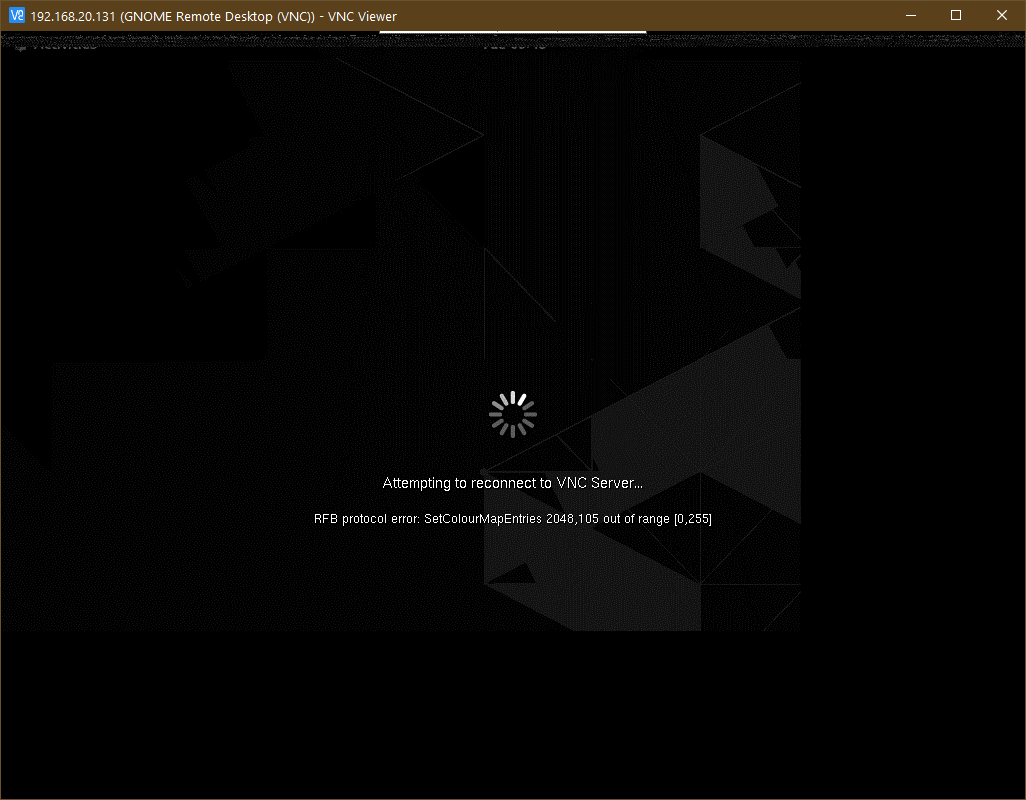

Because you’ve only started one instance of VNC server, the first open port is 5901/TCP.Īgain, the ss command must be executed with root privileges.

# systemctl start systemctl status systemctl enable list the opened ports in listening state owned by the VNC server, run the ss command, which is used in CentOS 7 to display network sockets. Note that sometime the new created user without such file /home/my_user/.vnc/%H%i.pid in the home directory, so we need to copy from the original users’ directory, e.g., xxx.3.pidĥ. After you’ve made the proper changes to VNC service file, reload systemd system initialization program to pick up the new vnc configuration file and start the TigerVNC server.Īlso, check VNC service status and enable the VNC daemon system-wide by issuing the below commands. # vi the following lines to file file ĮxecStartPre=/bin/sh -c '/usr/bin/vncserver -kill %i > /dev/null 2>&1 || :'ĮxecStart=/sbin/runuser -l my_user -c "/usr/bin/vncserver %i -geometry 1280x1024"ĮxecStop=/bin/sh -c '/usr/bin/vncserver -kill %i > /dev/null 2>&1 || :' Also, for each started VNC server, the port 5900 will be incremented by 1.

The value of 1 after represents the display number (port 5900+display).

# cp the next step edit the copied VNC template configuration file from /etc/systemd/system/ directory and replace the values to reflect your user as shown in the below sample. If your user is not granted with sudo privileges, either switch directly to root account or run the command from an account with root privileges. In order to copy the VNC template file you need to run the following command with root privileges. $ su - your_user # If you want to configure VNC server to run under this user directly from CLI without switching users from GUIģ. Next, add a VNC service configuration file for your user via a daemon configuration file placed in systemd directory tree.
Centos tigervnc server install#
$ sudo yum install tigervnc-serverĢ. After, you’ve installed the program, login with the user you want to run the VNC program and issue the below command in terminal in order to configure a password for the VNC server.īe aware that the password must be at least six characters length. In order to install TigerVNC server in CentOS 7, open a Terminal session and issue the following command with root privileges. Tigervnc-server is a program which executes an Xvnc server and starts parallel sessions of Gnome or other Desktop Environment on the VNC desktop.Ī started VNC user session can be accessed by same user from multiple VNC clients. Step 1: Install and Configure VNC in CentOS 7ġ. Unlike other VNC servers available which connects directly to the runtime desktop, such as VNC X or Vino, tigervnc-vncserver uses a different mechanism that configures a standalone virtual desktop for each user. VNC ( Virtual Network Computing) is a server-client protocol which allows user accounts to remotely connect and control a distant system by using the resources provided by the Graphical User Interface.
Centos tigervnc server how to#
In this guide we’ll explain how to install and configure VNC Remote Access in latest release of CentOS 7 and RHEL 7 Desktop edition via tigervnc-server program.


 0 kommentar(er)
0 kommentar(er)
